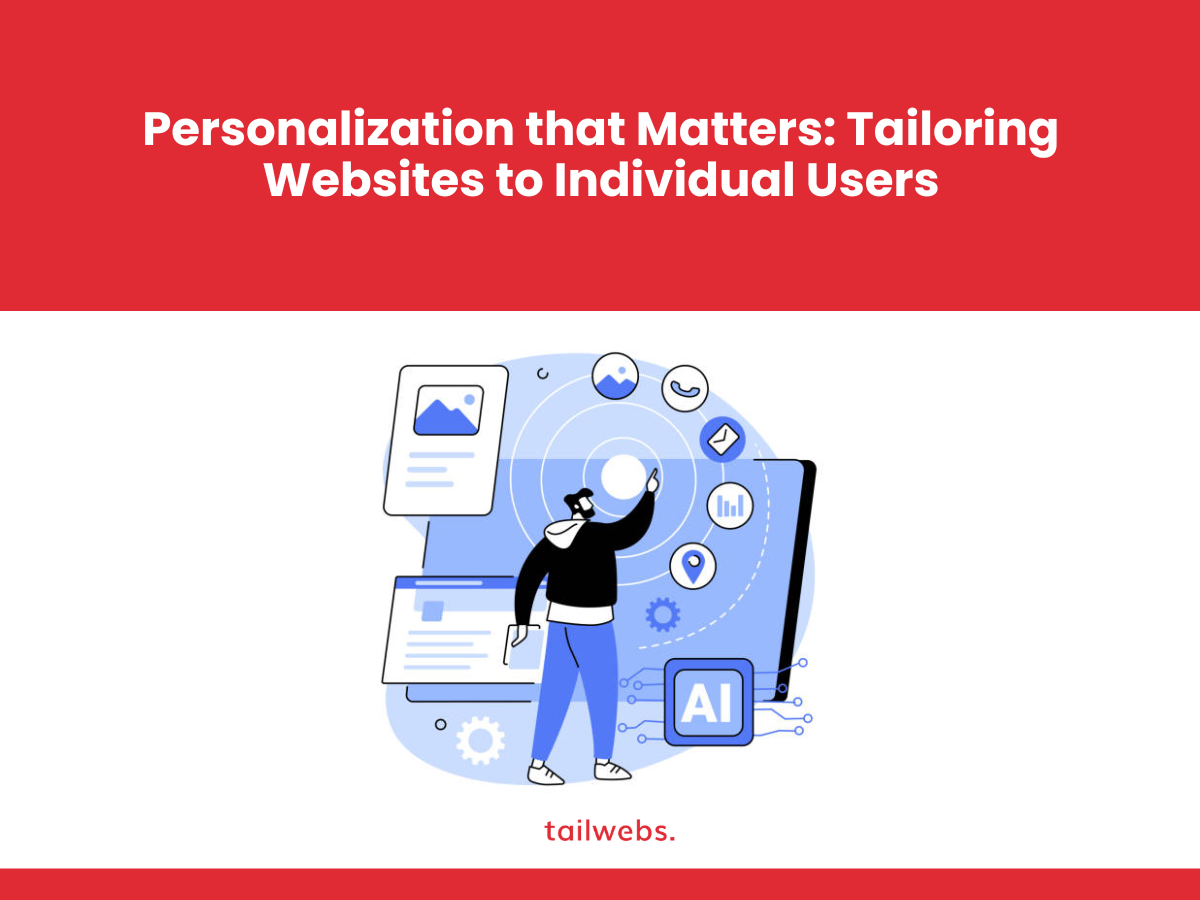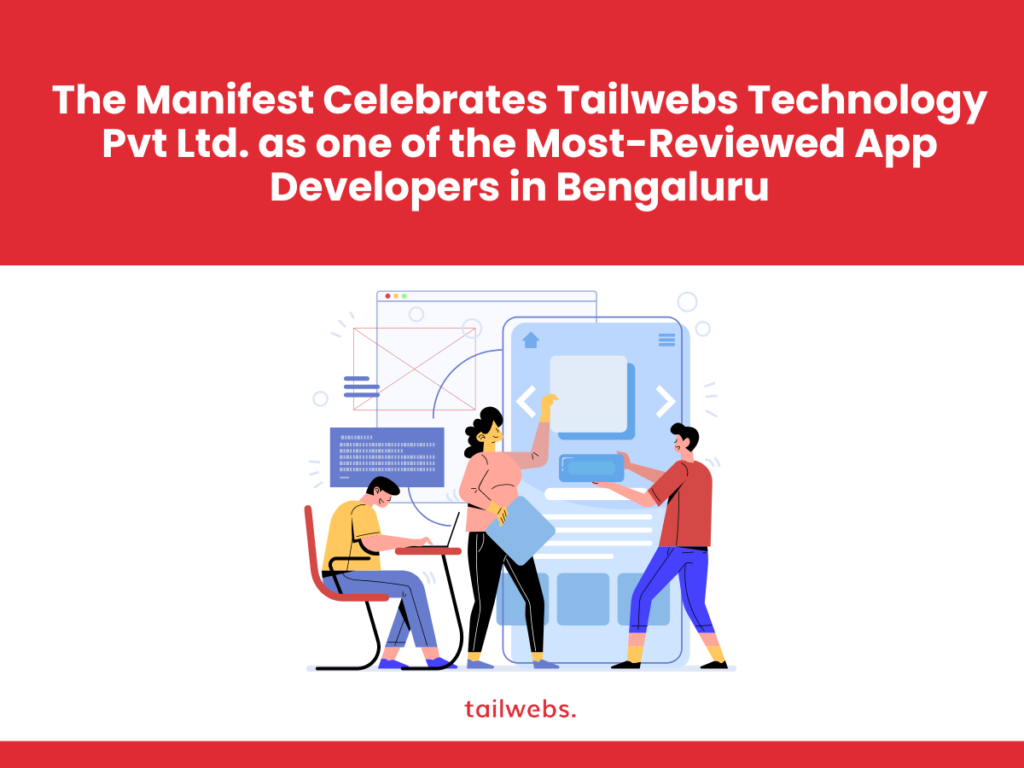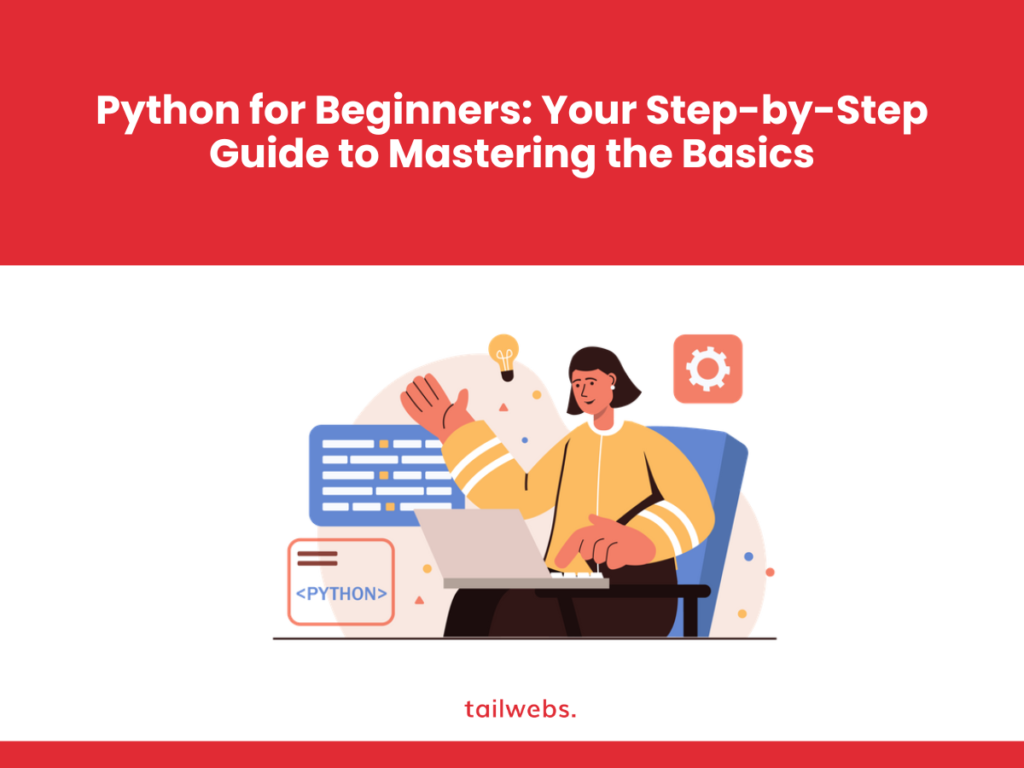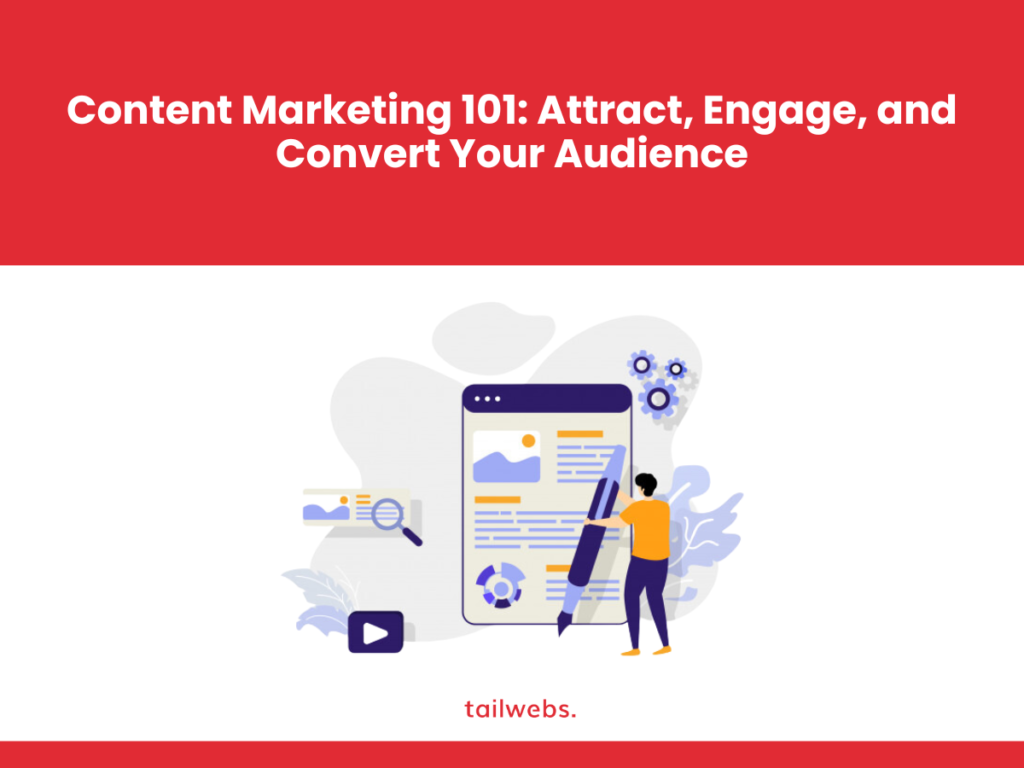Imagine walking into a store where the staff greets you by name, knows your favourite styles, and recommends items specifically tailored to your preferences. That’s the magic of personalization in the physical world, and it’s increasingly becoming the expectation online. In today’s digital landscape, a one-size-fits-all website simply won’t cut it. Users crave experiences that feel relevant, and intuitive, and speak directly to their needs. That’s where personalization comes in.
The Power of Personalization:
Engagement & Conversion Boost:
Studies show that personalised websites see an average increase of 15% in engagement and a 20% uplift in conversions. That translates to happier users, higher sales, and ultimately, a more successful business.
Enhanced User Experience:
When users encounter content and recommendations that resonate with their interests, they feel valued and understood. This leads to a more positive and satisfying experience, making them more likely to return and engage further.
Building Brand Loyalty:
Personalization fosters a sense of connection between your brand and your users. By catering to their individual needs, you’re demonstrating that you care about their experience and value their business. This builds trust and loyalty, leading to long-term relationships.

Strategies for Tailoring Your Websites:
Data is King:
Effective personalization starts with collecting and analysing user data. This includes demographics, browsing behaviour, purchase history, and even interactions on social media. By understanding your users, you can tailor your website to their specific preferences.
Content that Speaks:
Once you have data insights, use them to curate content that resonates with different user segments. This could involve showcasing relevant product recommendations, highlighting blog posts aligned with their interests, or displaying targeted banner ads.
Dynamic Design Elements:
Leverage technology to dynamically adjust elements on your website based on user data. This could include changing the homepage banner, customising product layouts, or even adapting the overall website theme to suit individual preferences.
Beyond the Surface:
Personalization goes beyond just content and design. Consider personalising the user journey itself. Implement features like automatic login for returning users, streamlined checkout processes based on past purchases, or targeted email campaigns triggered by specific website actions.
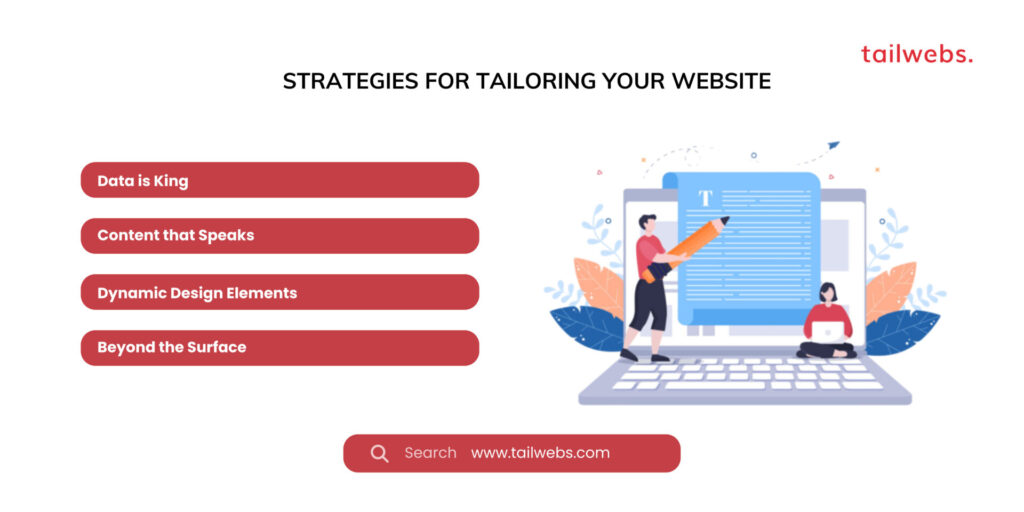
Tools and Techniques for Personalization:
Customer Relationship Management (CRM) Systems:
CRMs store valuable customer data and allow you to segment users based on various criteria. This data can then be used to personalise content and offers across your website.
Marketing Automation Platforms:
These platforms automate personalised email campaigns, triggered by specific user actions or website visits. They can also be used to personalise website content and pop-up messages.
A/B Testing:
Continuously test different personalization strategies to see what works best for your audience. A/B testing allows you to compare different versions of your website, content, or email campaigns and identify the options that resonate most with your users.
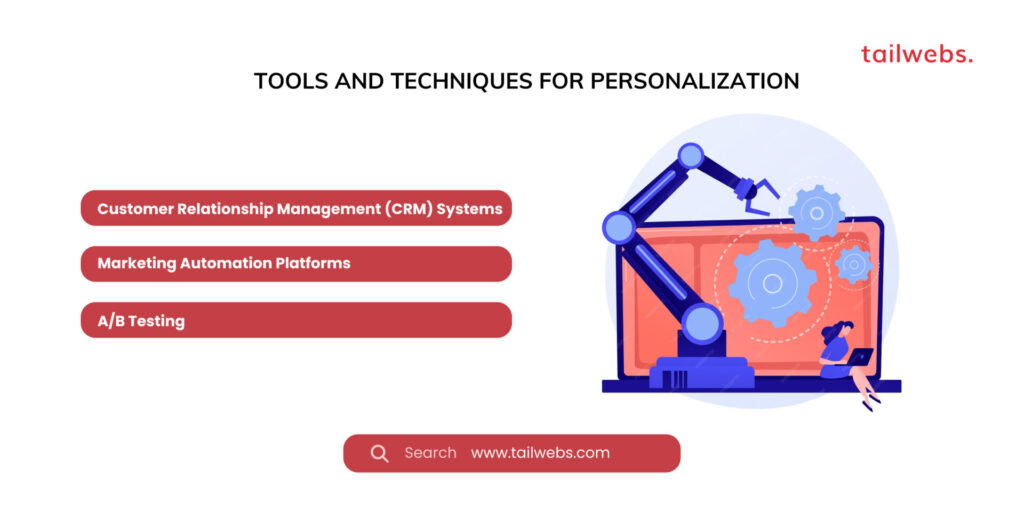
Personalization in Action:
Let’s look at some real-world examples of successful website personalization:
Amazon:
Recommends products based on your browsing history and past purchases, creating a highly personalised shopping experience.
Netflix:
Suggests movies and shows based on your viewing habits and preferences, keeping you engaged with the platform.
Spotify:
Creates personalised playlists and radio stations tailored to your musical taste, making music discovery effortless.
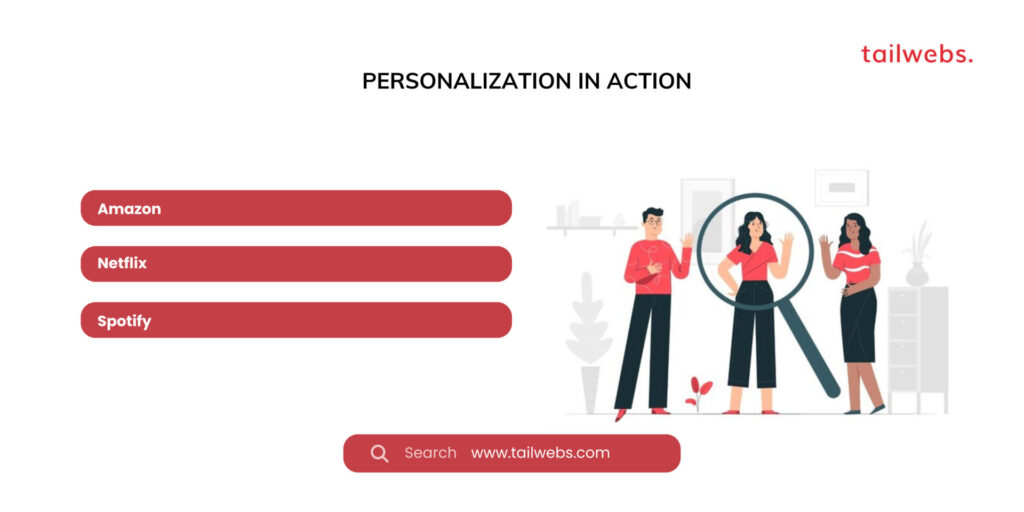
The Future of Personalization:
As technology advances, personalization will become even more sophisticated. Artificial intelligence (AI) and machine learning (ML) will play a crucial role in understanding user behaviour and predicting their needs in real-time. This will allow for hyper-personalised experiences that are almost indistinguishable from one-on-one interactions.
Remember:
Focus on Value, Not Creep:
While personalization is powerful, it’s important to respect user privacy and avoid being intrusive. Focus on providing value and improving the user experience, not on collecting data for its own sake.
Transparency is Key:
Be transparent about how you collect and use user data. Clearly communicate your privacy policy and give users control over their data preferences.
Personalization is a Journey:
Don’t expect overnight results. Effective personalization is an ongoing process of experimentation and optimization. Continuously gather data, analyse results, and refine your strategies to create truly personalised experiences that matter.
By embracing personalization, you can transform your website from a generic online storefront into a dynamic and engaging space that caters to the unique needs of each individual user. This not only leads to improved business outcomes but also fosters deeper connections with your customers, building lasting loyalty and advocacy for your brand.
In the previous post, we discussed the power of personalization and its importance in tailoring websites to individual users. Now, let’s delve deeper into the practical side of implementation. We’ll explore how personalization strategies and tactics can be applied across different industries to deliver targeted experiences that truly resonate with users.
Industry-Specific Personalization Approaches:
E-commerce:
Product Recommendations:
Utilise browsing history and purchase data to recommend relevant products, increasing the likelihood of conversion. Showcase complementary items alongside viewed products or present personalised shopping carts based on past purchases.
Dynamic Search Results:
Tailor search results based on user location, purchase history, and preferred brands, leading them to the products they’re most likely to be interested in.
Targeted Promotions and Discounts:
Offer personalised discounts and promotions based on user segments or previous buying behaviour, driving engagement and sales.
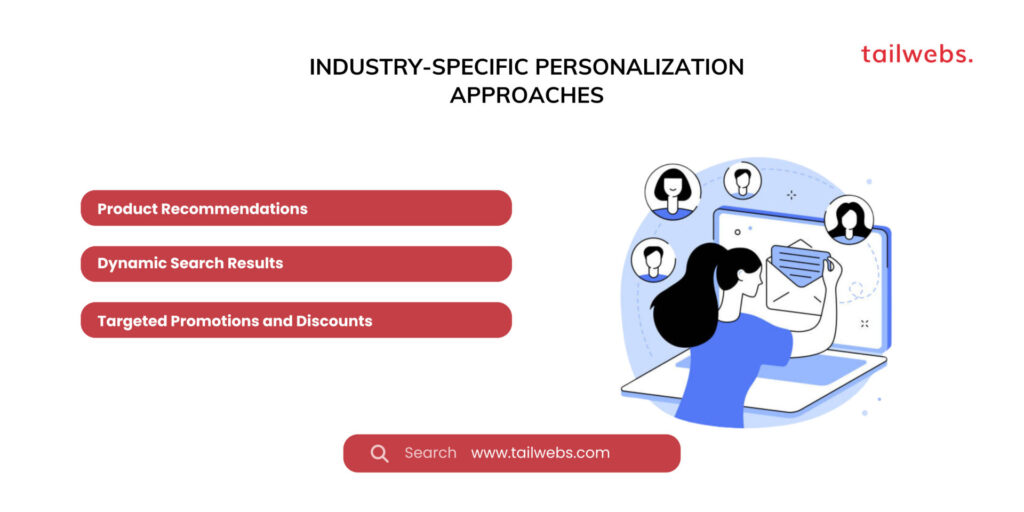
Travel & Tourism:
Curated Travel Packages:
Generate custom travel packages based on user preferences, travel styles, and budget constraints. Recommend destinations, activities, and accommodations that align with their interests.
Dynamic Pricing and Deals:
Offer personalised pricing on flights, hotels, and tours based on user data and travel patterns. Highlight limited-time deals and packages targeted to specific demographics or interests.
Location-Based Recommendations:
Suggest nearby attractions, restaurants, and events based on the user’s current location or planned itinerary. Provide real-time travel updates and personalised transportation options.
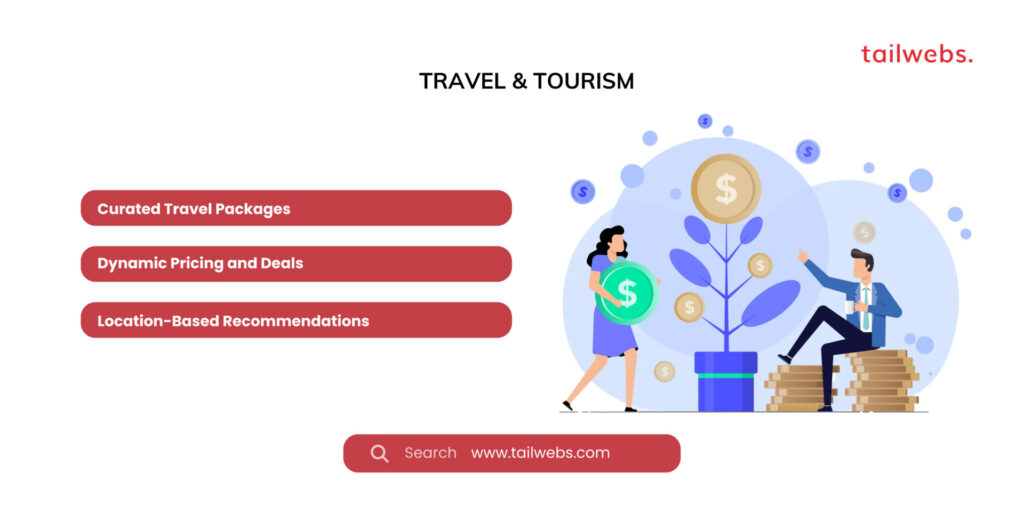
Media & Entertainment:
Personalised Content Recommendations:
Suggest movies, shows, music, and articles based on user viewing history, favourite genres, and ratings. Utilise AI to predict preferences and curate personalised playlists or reading lists.
Dynamic Content Feeds:
Tailor news feeds and social media content based on user interests and location. Showcase trending topics and articles relevant to their specific needs and preferences.
Interactive Content and Quizzes:
Engage users with interactive quizzes and polls to discover their hidden interests and personalise content recommendations accordingly. Allow users to create personal watchlists or reading lists for future reference.
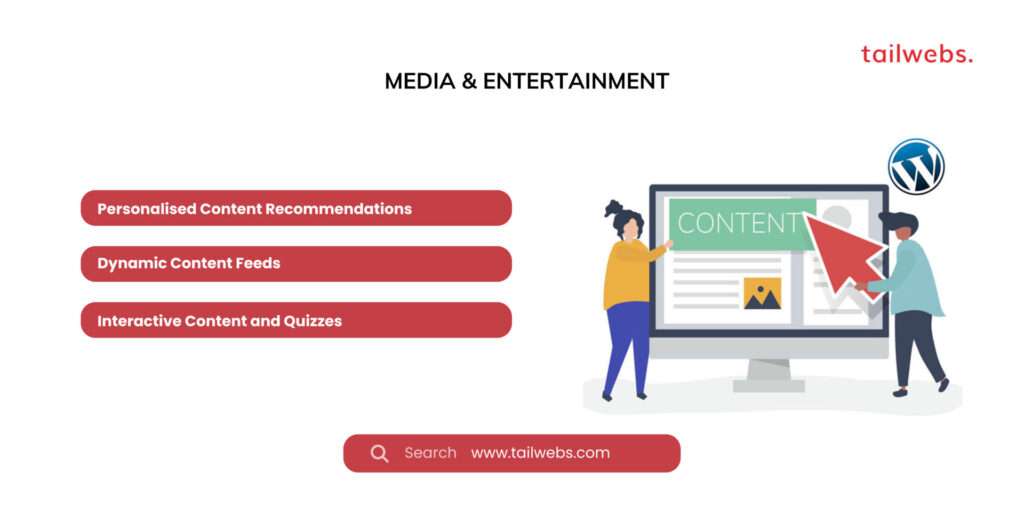
Financial Services:
Tailored Financial Products and Services:
Recommend investment portfolios, savings plans, or loan options based on user income, risk tolerance, and financial goals. Provide personalised financial tips and advice relevant to their specific situation.
Smart Budgeting Tools:
Offer customizable budgeting tools and track spending patterns to help users manage their finances effectively. Send personalised alerts and notifications for upcoming bills or potential overspending.
Secure and Personalized Logins:
Implement multi-factor authentication and biometric login options for enhanced security. Remember user preferences for language, currency, and account views for a seamless experience.
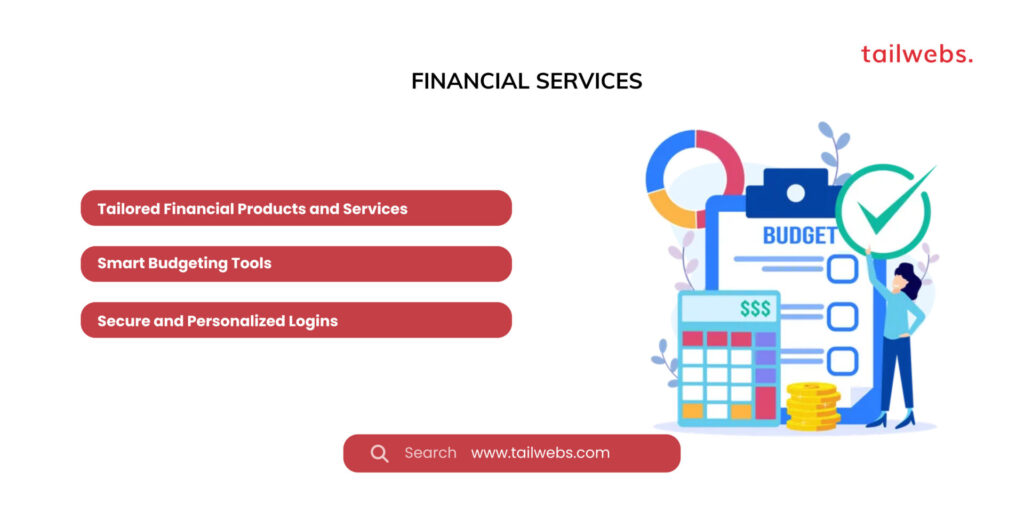
Healthcare:
Targeted Patient Education:
Provide personalised health information and educational materials based on the user’s medical condition, age, and health history. Deliver relevant articles, webinars, and support groups directly to their inbox.
Appointment Scheduling and Reminders:
Offer convenient online appointment scheduling options and send personalised reminders to prevent missed appointments. Allow users to manage prescriptions and access medical records through secure patient portals.
Personalised Wellness Recommendations:
Recommend fitness programs, dietary plans, and lifestyle tips based on individual health goals and biometric data. Track progress and provide personalised feedback to encourage healthy habits.
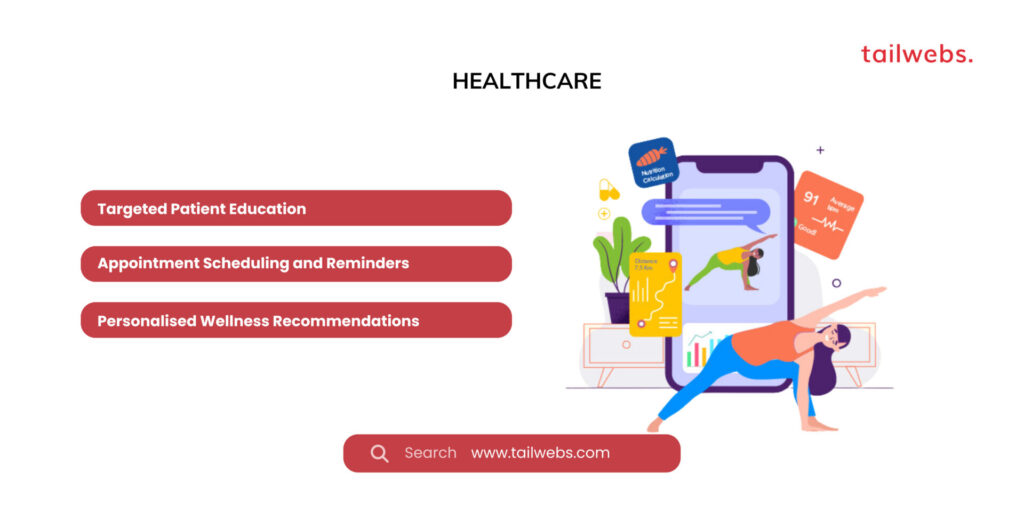
Remember:
Start Small and Scale Gradually:
Personalization doesn’t require a complete overhaul of your website. Begin with small-scale implementations and test different strategies before expanding.
Focus on User Value:
Always prioritise providing value to your users through personalization. Don’t bombard them with irrelevant content or intrusive ads.
Continuously Monitor and Adapt:
Track the performance of your personalization efforts and analyse user data to identify areas for improvement. Adapt your strategies based on insights and adjust them over time.
By implementing these industry-specific strategies and tactics, you can create personalised experiences that resonate with your target audience and drive tangible results. Remember, personalised websites aren’t just a trend; they’re the future of building lasting relationships with your customers and achieving success in the digital landscape.

